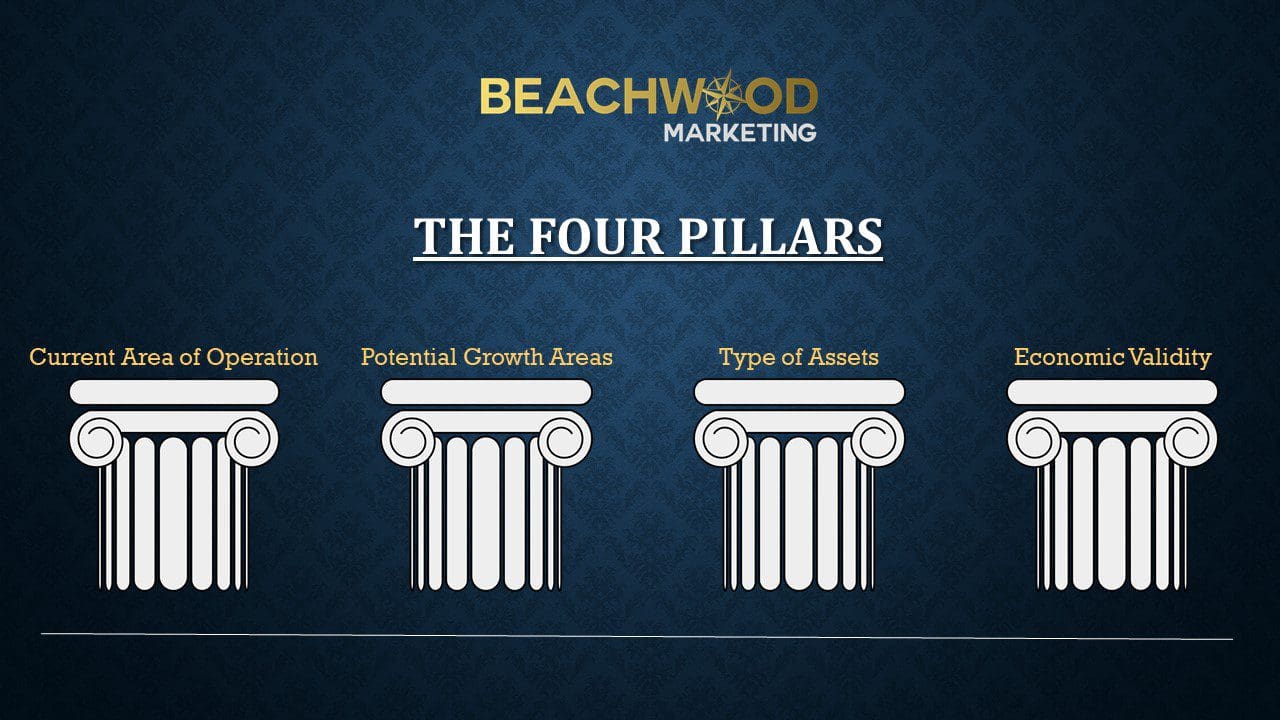“Sometimes what you think is the hardest problem is the easiest to solve.”—The Beachwood Corporate Mantra.
Who we are: Beachwood is an Oklahoma City-based oil and gas telemarketing company. We talk to about 1,500 oil and gas companies a month, usually in conjunction with a buyer who has targeted a specific area that they would like to acquire in. Our company markets directly to oil and gas firms to determine whether a firm is interested in selling property and, if so, works with the seller to bring the details of the deal to a buyer. Beachwood’s current focus is exclusively within the U.S.
In this business the survivors are the people and companies that focus on integrity and advocacy. This business is surrounded by people who leave when times are bad and fly in when times are good. Beachwood doesn’t think in terms of single transactions; we work with companies that want to do multiple deals over the long term. It’s easy to sit back and let the deals hit the market. It’s easy to auction properties with “selective data.” It’s hard to find deals that tell a story, and in this market, the story holds the value. I can’t stress enough that EVERY. SINGLE. DEAL. Is different. What I will talk about in this article are tactics we use as the base of every strategy.
Step One: Stop
The first step we tell our clients is: stop doing what everyone else is doing! Everyone is looking at what’s at the auction, what’s coming up to auction, who’s talking bankruptcy, who’s putting deals on the market in June. What was going to be at Winter NAPE—AH that sucked. Wonder what’s going to be at Summer NAPE? Who’s selling at dealmakers, on PLS, on Clearinghouse? Everyone is doing the exact same thing, resulting in a massive drop in deals over the last year.
Quarter 1 is essentially going to be defined by the RSP/Concho merger. People tell me it’s the market. It’s not. It’s the type of opportunities that have been presented. Once you stop looking where everyone else is looking…what are you doing?
Step Two: Organize
After you stop what everyone else is doing, the next step is to map your core market. Your core market is the key to this entire process. It doesn’t matter if you are trying to acquire or trying to divest. You map out your core market. “Core Market” is much more than a play or a geographic location or type of asset. Your company’s core market defines the day-to-day strategy that drives each business decision and continually pushes the company toward the achievement of the business’ ultimate success. If you already have production, it will be easier to build the entire map, but if not, you can start to build, and as you acquire, you can finish the map.
If you have production, map it out. Then encompass the geographic clusters. Based on the location of our assets we have circled our “best area.” If you don’t have production, this area will be your target area. Be as specific as possible. Don’t use “the Permian” or “Pennsylvania.” In this current market, properties that go to a data room will just be white noise. There are going to be so many deals that will come to the market in Quarter 3 (and beyond), and you want your target area to be completely defined so you can weed out what’s available publicly.
The goal, of course, is to buy assets. Right now, everyone wants to pay PDP only, no upside and present a number with a low total month ROI. In order to get the assets you want, you’ll need to find deals that present value. This is the most important step of the entire process. By defining value (whether through an LOS, PUD, or what the seller’s plan was originally for the property) you can increase your odds of correctly valuing a property to match the seller’s expectations.
The buyers in this market are not just looking at the numbers. They are looking for the piece of their strategy that is missing. They are looking to close gaps and open future opportunities.
With today’s due diligence process, it doesn’t take much to uncover any issues with an asset. Be forward with the seller, be direct and have your data available. They know that no one will step into a property that has surprises at every turn. But, they will step into a property that has issues and clear solutions to solve them.
Organization will take time and data. Lots of data. Marie Kond? wrote in her bestselling book “The Life-Changing Magic of Tidying Up” that the space in which we live should be for the person we are becoming now, not for the person we were in the past. What we are doing is going beyond that, creating the same type of atmosphere for the business world. That the space in which we work should be for the better company we are becoming now, not for the company we were in the past.
Step Three: Strategize
Once we have physically mapped the area, we can move to Step Three. We will really begin to uncover the key elements of your core market in this step. We call these the Four Pillars.
These will define your entire strategy, whether divesting or acquiring. The first one we just accomplished: your current area of operation, or target area if you don’t currently have production. The next is Potential Growth Areas or PGA as we like to call it. The third is the Type of Asset and the last is Economic Validity. Together, these make up our four pillars of strategy. I strongly recommend you get as in-depth as possible. Details may be a deciding factor in a buying or selling decision.
As a side note, none of this works if you are using data that isn’t current. Get current data from the seller! This chart will need to be done for every single asset. Then once completed, you can group them into geographical clusters and create group asset classes. We also add in a section we call Competitive Companies, which are basically organizations that look, at least in part, like your organization. They focus on the same area, economics and opportunities.
To maximize your scope, focus on at least two of the columns. We always recommend geographic location, and then any of the other columns. Ninety-nine percent of what you are looking for—which are assets that fit into your core market—are not going to be available where everyone else is looking. Because they are off-market, these companies are going to require real capital. They are going to want to see real value for their assets. And because they fit within your core market, they become real value assets to your organization.
If you want discounted junk, you know where to look! If you want real value assets, you have to look beyond the short term. Successful companies find their core market; find what their core market share is, then capture more market share. They do this at the expense of short term returns. Which gets us to our fourth step.
Step Four: Capitalize
The Beachwood 4 Step Process? Stop, Organize, Strategize, and Capitalize. Everyone wants maximum ROI—so how can you capitalize on your strategy and achieve that? First, you have to be patient. This process takes time, and you have to know where your market exists before you can build on it. Second is commitment. Everyone needs to be on the same page, working toward the same goal. If your team understands the vision, then everyone wins.
Lastly is discipline. My worst enemy. I love “yes.” Nothing makes me happier than getting to “yes.” I’m in the deal making business! “Yes” is what I live by! But within the context of buying or selling, “no” is very powerful. It keeps out distractions and keeps the objective in sight at all times. Saying “No” to a deal that doesn’t fit in your core market will achieve that maximum ROI you are looking for.
Josh Robbins is currently the Chief Executive Officer of Beachwood Marketing. He has consulted and provided solutions for several industries, however, the majority of his consulting solutions have been in manufacturing, energy and oil and gas. Mr. Robbins has over 15 years of excellent project leadership in business development and is experienced in all aspects of oil and gas acquisitions and divestitures. He has extensive business relationships with a demonstrated ability to conduct executive level negotiations. He has developed sustainable solutions, successfully marketing oil and natural gas properties cost-effectively and efficiently. Beachwood strives to partner with top tier oil and gas firms to find off-market deals that provide maximum benefit to their corporate acquisition strategy. At Beachwood, Mr. Robbins manages the corporate branding, senior staff, and the Beachwood Strategic Consulting Group, including sales strategy development for all of the Beachwood clients. Josh has been featured in numerous trade magazines as he is an accomplished writer and speaker on the acquisition and divestment market. He writes a bi-monthly acquisition and divestiture column for Oilman Magazine that has a social reach of an estimated 145,200 views per issue. The best way to reach Mr. Robbins is through email.






